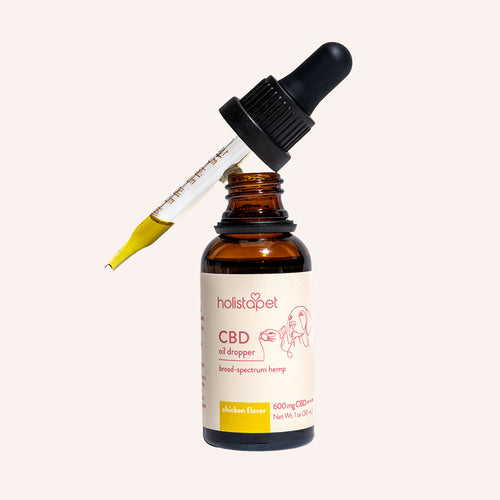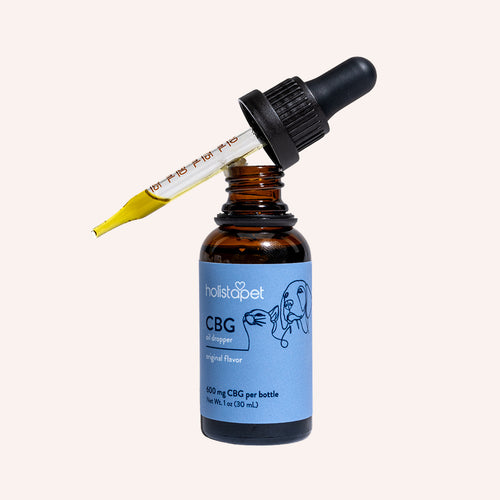Joint problems in dogs are a real hassle for our furry friends. Not being able to go on walks or zoom around the house can take a toll on their well-being. So, looking after your pup's joints is paramount.
Pet parents must know the common causes and symptoms of canine joint issues. When they do, early detection and appropriate treatment are well within reach. Keep reading our guide for more helpful insights on your dog's joints.
Why Healthy Joints Are Important for Dogs
Healthy joints promote dogs' mobility and active lifestyle. Dogs rely on their joints for running, jumping, and playing. These are all vital activities for their physical and mental well-being. With proper joint function, dogs can stay peppy and happy at any life stage.
Common Joint Issues in Dogs
Canine joint issues fall into two categories: developmental joint problems and degenerative joint conditions. Understanding these categories can help properly identify and treat joint troubles. Let's discuss each one.
Developmental Joint Issues
Developmental joint issues arise when joints do not form properly. These issues are often genetic and common in young dogs. Common examples include hip or elbow dysplasia, wherein the hip or elbow joints develop abnormally, causing instability and dog joint pain. Early detection and intervention can help manage these conditions.
Degenerative Joint Conditions
Over time, cartilage and joint tissue can break down. These degenerative joint issues are common in older dogs. Examples include osteoarthritis and degenerative joint disease, wherein the cartilage wears away, causing the bones to rub against each other. Lifestyle changes and medical treatments usually help.

Causes of Dog Joint Problems
Several factors can lead to problematic dog joints. Understanding these different causes can help with prevention and treatment. In the next sections, we'll discuss them in detail.
Improper Growth
When a dog's joints do not develop correctly, conditions like hip or elbow dysplasia can arise. This abnormal growth is often due to genetics, poor nutrition, and rapid growth spurts. Early vet checkups can help track and address such issues.
Aging
As dogs age, their joints experience wear and tear. Older dogs often develop conditions like osteoarthritis. This can cause discomfort and reduced mobility. Regular vet checkups and proactive care can help here.
Breed
Due to their genetics, certain dog breeds are more prone to joint troubles. Larger dogs like Bernese Mountain Dogs and German Shepherds often suffer from hip dysplasia and elbow dysplasia. Knowing your dog's breed-specific risks can help you take preventive measures.
Weight
There's increased pressure on the joints when a dog's weight compared to its ideal weight is too high. This can result in a quicker decline of the joint tissues. A balanced diet, regular exercise, and regular weight checks can help.
Injury or Trauma
An active dog is more prone to accidents, falls, or intense physical activities. These can result in more serious injuries like stress fractures or cruciate ligament problems. Prompt vet care is important to prevent complications. Preventive measures include gentle exercises and avoiding risky activities.
Underlying Conditions
Underlying conditions, such as autoimmune disorders and metabolic conditions, can affect joint health. Regular veterinary checkups can help detect any hidden conditions early. They allow timely intervention and appropriate treatment.

Signs of Joint Discomfort in Dogs
Many signs can point to a dog's joint pain. They include:
- Limping and Stiffness
- Irritability
- Frequent Slipping or Falling
- Cracking Joints
- Swelling of the Joints
- Loss of Appetite
- Depression
- Licking, Chewing or Biting the Affected Area
- Lethargy
- Reduced Mobility
- Whining or Whimpering
If you notice any of these red flags, consult your vet. They are experts in treating joint pain in dogs and can give sound advice.
Potential Treatments for Joint Issues in Dogs
Various treatments can help manage dog joint issues. Knowing the available options can help pet owners care for their furry friends. Let's look at the different methods closely.
Dietary Changes
A balanced diet rich in essential nutrients can support joint health. Add foods high in omega-3 fatty acids, glucosamine, and chondroitin to your pup's diet. Consult your vet to develop a diet plan for your dog's needs.
Weight Management
Excess weight puts extra pressure on the joints, increasing discomfort and mobility issues. A weight management plan can help prevent this. Consult your vet to create a weight loss or maintenance program for your pet.
Physical Therapy
Hydrotherapy, massage, and controlled exercises can help improve joint health. Physical therapy can help strengthen the muscles surrounding the joints, promoting stability. Work only with a certified animal physical therapist to ensure your pup's safety.
Prescription Medications
Veterinarians may prescribe medications to help manage symptoms. These medications can help your dog's mobility and quality of life. Always follow your vet's guidance on dosage and duration for safety and effectiveness.
Surgery
Surgical interventions can range from joint repairs to replacements. Procedures like cruciate ligament repair or hip replacement can greatly help dogs experiencing joint pain. Consult with a veterinary surgeon to discuss the best options for your dog.
How to Support Dog Joints and Potentially Prevent Problems
Supporting your dog's joints involves a combination of proper care and proactive measures. Here are some suggestions:
- Proper Nutrition. A balanced diet rich in essential nutrients can support joint health. Include foods with glucosamine, chondroitin, and omega-3 fatty acids.
- Dog Joint Supplements. Supplements can provide extra support for your pup's joints. We recommend HolistaPet's:
- Joint Support Soft Chews for Dogs. Has chondroitin, glucosamine, MSM (methylsulfonylmethane), and turmeric to promote nimble joints.
- Muscle Support Soft Chews for Dogs. With a natural blend of amino acids and muscle-building ingredients to support joint stability.
- Regular, Low-Impact Exercise. Swimming and walking can help maintain joint mobility without putting extra pressure on the joints.
- Comfortable Living Space. Provide soft bedding and avoid slippery floors to reduce the risk of falls.
- Gentle Handling. Handle your dog carefully to avoid straining their joints.
- Regular Veterinary Checkups. Routine checkups help detect joint troubles early and ensure timely treatment.
How to Ease Dog Joint Soreness and Stiffness
A combination of methods can help ease joint discomfort in dogs. Here are some options:
- Dietary Adjustments. Include foods that promote joint health, such as those rich in omega-3 fatty acids.
- Soothing Supplements - CBD for Dogs. CBD (cannabidiol) works by interacting with dogs' endocannabinoid system (ECS). This system plays a role in regulating their sleep, mood, and stress response. When this happens, CBD can have a calming and soothing effect that may help ease discomfort. We recommend HolistaPet's:
- CBD Dog Treats + Joint and Mobility Care. Formulated to promote joint health and mobility.
- CBD Mobility Chews for Dogs. Comes in three strengths (5mg, 10mg, and 20mg) to help address dogs' mobility needs.
- Dog CBD Oil. In a convenient dropper bottle to ensure effortless and precise dosing.
- Gentle Exercise. Low-impact activities like swimming or short walks can help maintain mobility.
- Orthopedic Bedding. Provide supportive bedding to cushion your pet's joints.
- Physical Therapy. Professional physical therapy can include massage, stretching, and hydrotherapy to promote joint function.
- Hot or Cold Therapy. Applying heat or cold packs to the affected areas may help reduce soreness and swelling.
- Regular Veterinary Checkups. Frequent checkups help spot any changes in your dog's joint health.
Dog Joint Problems - Frequently Asked Questions
Understanding dog joint issues can raise many questions. This section answers common queries to help you better manage your pup's joint health. Read on for more helpful insights!
At what age do dogs start having joint issues?
Dogs can start experiencing joint issues at various ages, depending on their breed, genetics, and lifestyle. Larger breeds may show problems as early as 1-2 years old. Most dogs, though, begin to develop joint issues as they age, usually around 7 years or older.
When should I visit the vet for my dog’s joint issues?
You should visit the vet as soon as you notice joint troubles in your dog. Early intervention can prevent complications. Regular checkups also help track and manage any issues that may arise over time.
How do I choose the best joint supplement for my dog?
Look for supplements with glucosamine, chondroitin, and other ingredients that support joint health. Also, only buy from trusted brands, like HolistaPet.
We offer high-quality products made with all-natural ingredients. Our offerings are also gluten-free, dairy-free, non-GMO, third-party lab-tested, and vet-approved. For our CBD pet products, we use broad-spectrum CBD. This means they have no THC (tetrahydrocannabinol), the mind-altering compound in cannabis.
Related Post: Using CBD for Dogs With Hip Problems
What are the signs that my dog is getting better?
Several signs can point to your pup feeling better. They include:
- Increased Mobility and Willingness To Move Around
- Reduced Limping or Stiffness
- Return To Normal Activity Levels and Playfulness
- Improved Mood and Appetite
- Less Frequent Whimpering or Whining When Moving
The Bottom Line - Joint Problems in Dogs
With proper care, you can effectively manage your pup's joint troubles. Regular checkups, a balanced diet, and the right treatments can make a huge difference in their comfort levels.
For added support, we have a range of natural products that support dogs' joint function. Combining different strategies and staying proactive will help your best friend lead a happy and active life for years!

![Complete Guide to Joint Problems in Dogs [Symptoms + Solutions]](http://www.holistapet.com/cdn/shop/articles/dog-joint-problems_520x500_520x500_520x500_26a0a758-8c64-432b-a2ce-1a12c64219b3.jpg?v=1759861360&width=1500)

 CBD Oil for Dogs - Fast Acting
CBD Oil for Dogs - Fast Acting
 Chicken Flavored CBD Oil For Dogs - Easy Dose
Chicken Flavored CBD Oil For Dogs - Easy Dose
 Salmon Flavored CBD Oil For Dogs - Highly Rated
Salmon Flavored CBD Oil For Dogs - Highly Rated
 CBG Oil for Dogs and Cats - Loved by Thousands
CBG Oil for Dogs and Cats - Loved by Thousands





Leave a comment
All comments are moderated before being published.
This site is protected by hCaptcha and the hCaptcha Privacy Policy and Terms of Service apply.